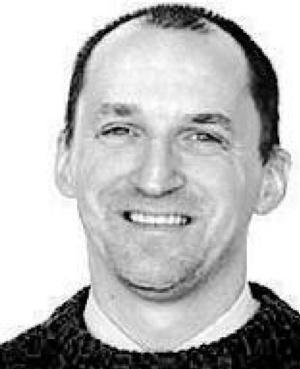By Mark Guydish
Times Leader
May 31, 2011
http://www.timesleader.com/opinion/Church_report_lends_perspective_to_priest_abuse_cases_MARK_GUYDISH_Commentary_05-30-2011.html
 |
THE PHILADELPHIA Inquirer took a swift swipe at the recent report on priest abuse that determined much of the problem had risen from the turbulent social upheaval of the 1960s and '70s. Two days after the report was made public, the Inky ran an editorial cartoon depicting a zonked out bishop slouched on the floor, the report in one hand and a hookah pipe in the other.
"It was the sixties, man …" the bishop says, stars and swirls around his head. The hookah bowl sports the word "rationalization" in the wavy, swooping print of the psychedelic days. Pundits understandably jumped on this as well, writing columns that chastised the Church for trying to mask its sins with the incense of the free-love era.
I had the same visceral reaction when I first read news stories of the report, commissioned and largely paid for by the United States Conference of Catholic Bishops. Blame abuse of minors by priests on the hippy-dippy days of flower power and the sexual revolution? You've got to be kidding!
Then I read the full report, and then I talked to Diocese of Scranton Bishop Joseph Bambera, who graciously agreed to a one-on-one interview about a topic that understandably inflames his flock.
Bambera did not eagerly embrace the report's logic. He made it clear he doesn't want people to take it as an excuse for past failures in the Church. But he noted that if you look at all the data in the report and sift through the factors it mentions in presenting its case the argument starts to look pretty strong.
The John Jay report looked at abuse cases from 1950 to 2010 and found a sharp increase during the 1960s and '70s followed by a steady decline from around 1985. They noted that the decline occurred after the Church started emphasizing "human formation" in seminaries, meaning priests-to-be took courses in and had discussions about their own lives, their own concerns, their own sexuality and their future life as celibates. I think this is the part critics of the report gloss over or miss completely.
The John Jay report does not excuse the sins of those priests as a product of that era, as though the rise in abuses were a natural, even inevitable result of the rise of the sexual revolution. What the report attempts to do, as Bambera put it, is "provide historical context."
Bambera and I are one year apart in age. We watched the late 1960s as tweens and attended high school in the early '70s. Teen clothes went from button shirts and narrow ties to bellbottoms and tie-dyes. TV news showed grainy pictures of half-a-million people, many shirtless, at Woodstock., adulsts swooning as the Beatles played Yankee stadium, and the gore of Vietnam.
Old social structures and old values were crumbling rapidly, and there was nothing substantive replacing them. Is it really so hard to believe the crop of men entering the seminaries back then could become more problematic than there predecessors?
The Church, frankly, reacted in its usual stodgy and glacial pace, too slow to change priest training, too reluctant to implement rigorous psychological screening of seminary candidates.
But it has changed. To dismiss the John Jay report as little more than another excuse for priest abuse is, frankly, unfair.
The reasoning in the report may of necessity be unsatisfying, but it is not unsound.
Mark Guydish can be reached at 829-7161 or via e-mail at mguydish@timesleader.com
Any original material on these pages is copyright © BishopAccountability.org 2004. Reproduce freely with attribution.